Talk with our local travel specialist who can help organize your trip.
Hindu Pilgrimage Sites in Nepal
Nepal is a well-known place for Hindu devotees and the Hindu pilgrimage sites in Nepal are the major sightseeing places in the country. Some of the religious places date centuries back. The religious significance has turned many destinations into revered places which attract thousands of devotees every year. Hindu devotees from all around the globe visit the pilgrimage sites to offer prayers and receive blessings. Some are located in the lowlands of Terai some in the Kathmandu valley while some are located high in the mountains. Moreover, pilgrimage sites located in deep valleys and steep hills might require devotees to trek. Religious sites are not only temples but the rivers and lakes are often considered holy in this country.
Religion permeates the daily lives of Nepalese. One of the two oldest religions in the world, Hinduism and Buddhism have co-existed beautifully in the country. Some of the revered sites like Muktinath, Haleshi Mahadev temple, and Gosaikunda are of religious significance for both the Hindus and Buddhists. You will find the temples, monasteries, and small shrines in the same temple complex showcasing the religious tolerance in the country. Recommended tour: Nepal Hindu Pilgrimage Tour - 8 Days
Keep on reading to find out about the religious significance, interesting legends associated, festivals celebrated, or how to reach the pilgrimage sites.
Table of Content
Pashupatinath Temple
Pashupatinath Temple is one of the holy Hindu pilgrimage sites in Nepal devoted to Lord Shiva. The temple is situated on the bank of the Bagmati River in Kathmandu. The four sides of the pagoda-style primary temple are covered in silver with a golden pinnacle and glided roof. The inner sanctum of the temple features Shiva Lingam, while the large bronze statue of Nandi, the bull vehicle of Shiva, sits outside the main temple facing Lord Shiva. Only the Hindus are allowed through the main gate of the temple. Evening arati is performed every evening on the banks of the holy Bagmati River, and you will see devotees sitting and watching the arati.
Legend
The Hindu devotees from all around the world pay homage to Pashupatinath dating back to the 5th century. According to the cow legend, Lord Shiva and Parvati disguised as antelope and were seen in the forest on the east bank of River Bagmati. Gods searching for them caught Shiva and grabbed him by the horns, which compelled him to resume his divine form. Shiva’s broken horn was worshiped, but it was buried and lost over time. Many centuries later, herdsmen saw his cows showering milk on the earth, and upon digging the spot deep, the divine Shiva Linga was discovered.
Along with the main temple of Pashupatinath, the temple complex contains various temples of the Hindu and Buddhist deities, statues, edifices, and inscriptions dating centuries back. Moreover, the temple complex of Pashupatinath is listed among UNESCO world heritage sites.
The Arya Ghats on the bank of Bagmati River near Pashupatinath temple is the auspicious cremation site of the Hindus. It is an important open cremation site where you can see the last rites being performed. Bodies wrapped on shrouds are laid out and cremated on a wooden pyre. As per the Hindu belief, the souls cremated here will find their way to heaven.
Festivals
The festival of Maha Shivaratri attracts hundreds of thousands of devotees from Nepal and India, and it is very crowded on this day. Mantras are chanted, and puja is carried out all night. The day marks the convergence of Lord Shiva and Shakti. It is believed that Lord Shiva is most active on the day of the entire year and performs the Tandava, a form of cosmic dance, on this day. You will also see Sadhus holy men, some covered in ashes and some naked meditating, interacting with disciples, and even posing for photos.
One of the important festivals of Nepal, Teej, attracts thousands of women to this temple seeking blessing from Lord Shiva. The festival falls in August or September every year. Married women fast for a day-long wishing for the prosperity and longevity of their husband’s life, while unmarried women fast wishing for a good husband. Women of different age groups dressed in red, especially sarees dancing in the temple premises merrily, are a sight to behold.
How to Reach Pashupatinath
Pashupatinath lies around 5km/3.1mi from Thamel and around 2.4km/1.5mi from the Tribhuvan International Airport, Kathmandu. It is easily accessible, and you can reach there via a taxi or a bus.
Budanilkantha Temple
One of the revered temples of Vishnu in the valley is Budanilkantha. The temple is situated at the foot of the Shivapuri National Park in Kathmandu. The 7th century stone idol of sleeping Lord Vishnu is one of the biggest statues in Nepal. It is carved out of a single block of black basalt stone and is 13 meters long and 5 meters tall. The finely carved black stone statue of Vishnu sleeping on a bed of serpents or Nagas in the middle of a pond is known to leave its spectator mesmerized. The main statue of Budhanilkantha holds a conch shell, Sudarshana chakra, club, and gem in his four hands while his head is crowned with multiple Kritimukha images. Moreover, you will see a priest at the foot of the idol receiving offerings from the devotees.
Legend
According to legends, a farmer was working in his field. While plowing the field, it stuck to a boulder. Further, blood started oozing out from a cut in the stone. Upon digging further, he unearthed an impressive image of Vishnu reclining from the ground. The recovered figure was placed in its present position. As per another legend, the statue was sculpted and brought here by Vishu Gupta, the 7th-century monarch of Kathmandu.
Festivals
On the auspicious occasion of Haribondhini Ekadashi or the 11th day of Kartik, a big fair is held here. It usually falls in October and November. The festival celebrating the awakening of Lord Vishnu from his long sleep attracts thousands of devotees.
How to Reach Budanilkantha?
Budanilkantha is located around 11km/6.8mi. away from Tribhuvan International Airport, Kathmandu, and lies nearly 9km/5.6mi. away from Thamel. It is easily accessible, and vehicles frequently go to the temple. You can easily reach here via a taxi or local bus.
Gosaikunda
The sacred lake of Gosaikunda is located at an elevation of 4,380m/14,370ft in the Langtang National Park. The pristine Lake Gosaikunda holds religious significance in Hindu mythology. It is the abode of Lord Shiva and Parvati. Moreover, the Hindu scriptures, including Ramayana, Mahabharata, Vishnu Purana, and Bhagavata Gita, directly associates the origin of Gosaikunda with Samudra Manthan.
Legend
Lord Shiva drank poison produced from the churning of the oceans during Samudra Manthan, and kept it in his throat. Further, he created the lake by thrusting Trishul, a holy trident, into the mountain to extract water. The water from the lake is believed to cool his stinging throat with poison, so the lake's water is said to be holy.
Festival
The festive occasions of Janai Purnima and Gangadashahara attract thousands of pilgrims from Nepal and India. Taking a dip in the holy waters of Gosikunda is said to releases an individual from all of their sins. Also, Shamans participate in the festival to renew and gain their spiritual power.
How to reach Gosaikunda?
You can either trek to Gosaikunda or ride on a helicopter. A trek to Gosaikunda starts with a drive to Syabrubesi, and you will be trekking past Lama Hotel, Langtang village, Kyangin Gompa, Lama Hotel, Sing Gompa before reaching Gosaikunda. Bask in awe-inspiring views of the mountains surrounding the lake, including Langtang, Manaslu, and Ganesh. Also, the vicinity has more the 108 lakes. Continue your trek past Ghopte, Tarkegyang, Sermanthang to Melamchi Bazaar, and drive back to Kathmandu. En route, you will be trekking past ridges, ravines, suspension bridges and walking through dense forests filled with oak, pine, and rhododendron trees. It is over two weeks trek which is possible to reduce up to one week. It is possible to customize the trek as per your requirement.
Take an exciting one-day helicopter tour to Gosaikunda, which begins from Kathmandu and takes around an hour or two. You will be leaving behind the densely populated Kathmandu city and flying towards Langtang National Park. Enjoy the view of scattered Tamang settlements, verdant hills, and the snowcapped mountains to Gosaikunda Lake. You will be standing beneath the towering mountains and will feel the chilly breeze. Bask in the serenity and take a dip at the holy lake before flying back to Kathmandu.
Featured Trips
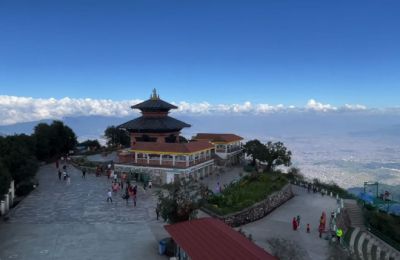
Kathmandu Valley and Chandragiri Hills Excursion Tour - 4 days
Kathmandu Valley and Chandragiri Hill Excursion Tour are suited for all age groups of families and individuals. It explores the ancient palaces, monuments, heritage sites, and hill stations surrounding the valley, offering exceptional Himalayan views.
Inquire Now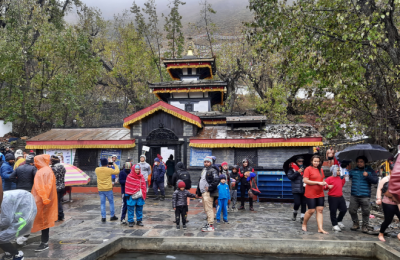
Muktinath Helicopter Tour - 1 day
Muktinath Helicopter Tour is one of the best possible fastest ways to visit Muktinath temple, the most sacred pilgrimage site in the Himalayas.
Inquire NowWhere to travel next?
Get help from our travel specialists for holiday ideas that matches your interests.
Muktinath
Muktinath is a sacred place for the Hindus and is referred to as the place of salvation. The temple is located at the foot of Thorong La pass in the Mustang district near Jomsom and is a part of the Annapurna Circuit Trek. It is also known as Mukti Kshetra, which means the place of salvation. The main temple features a small human-sized statue of Vishnu and also has images of Lakshmi, Saraswati, Janaki, Garuda, sons of Ram and Sita- Lava and Kusa and Sapta Rishis. Moreover, it is one of the 51 Shakti Pitha.
The temple complex features 108 stone faucets with bullhead spouts. Ice cold water from the Kali Gandaki Rivers flows through these spouts, and bathing in the holy water is said to reward salvation after death. The riverbed of the Kali Gandaki River is the only source of rare Shaligram or fossil stones that is needed to establish a Vishnu temple anywhere on earth.
Muktinath is equally significant for Buddhists, and it is believed to be the place of salvation as well. It is also the place where the founder of Tibetan Buddhism, Padmasambhava or Guru Padmasambhava, meditated. The temple has an old Buddhist monk, while Buddhist nuns worship in the main temple.
How to Reach Muktinath?
One of Nepal's important Hindu pilgrimage sites, Muktinath, is located around 374 kilometers away from Kathmandu. You can either travel by public bus, jeep, domestic flight, and anything in between. However, you need to fly or drive to Jomsom, take a drive further to Muktinath, followed by a hike to the hilltop temple.
There is no direct domestic flight to Muktinath. You need to take a flight of around 30 minutes to Pokhara and board a morning flight to Jomsom of approximately 20 minutes. The road journey in a public bus from Kathmandu to Muktinath via Jomsom takes around 16 to 17 hours. Traveling the same route by private jeep will be more comfortable. Take a short drive of around 25km/15.5mi. from Jomsom to the entrance of Muktinath Temple. Hike slowly up to the main temple of Muktinath. If you want, you can also ride on a horse to the temple.
Travel in luxury with a scenic helicopter flight to Muktinath. Enjoy a thrilling ride and fly close to snowcapped mountains. A charter flight will take anywhere between 45 minutes to an hour.
If you want to know more, then read our Travel Guide Getting to Jomsom and Muktinath
Manakamana Temple
Manakamana temple is dedicated to the Hindu Goddess Bhagwati, known to be an incarnation of goddess Parvati. The temple is located in the Manakamana village in the Gorkha district, around 106 kilometers or 66 miles west of Kathmandu. Manakamana is known as the wish-fulfilling goddess, and it is believed that the goddess grants the wishes of the pilgrims to the temple. The hilltop two-story temple is situated at an elevation of 1,300m/4,300ft and is built in typical Nepalese pagoda style.
Legend
An interesting story is attached to the origin of the temple. As per legends, the 17th century Queen of Gorkha possessed ‘divine powers,’ and only the priest Lakhan Thapa knew the secret. One day the King saw his wife as Goddess Manakamana and the priest as a lion. As soon as the king told her the incident, the King died a mysterious death. As per the traditional practice, the queen went to Sati, a ritual of committing suicide after the husband’s death. Lakhan Thapa pleaded with her not to follow the practice Sati ritual, but the queen left, saying that she would return.
After six months, a farmer was plowing the field, and a stone started to spill a stream of blood and milk after getting stuck by the plow. The news reached Lakhan Thapa, and he used Hindu tantric ritual to halt the stream. Moreover, he built a temple in the same spot and started serving the goddess. Instead of Brahmins, the descendants of Lakhan Thapa serve as the priests here.
Festivals
Some of the major festivals celebrated in Manakamana are Durga Ashtami and Dashain, where different forms of Durga or Bhagwati are worshiped. Thousands of Hindu devotees visit the temple of the wish-fulfilling goddess, and the temple attracts a lot of people during festival time.
How to Reach Manakamana?
Local buses frequently leave for Kurintar from Kathmandu, which is located around 150km/65.2mi. and takes around 4 to 5 hours. Kurintar lies on a highway, and a big gate will welcome you upon reaching there. You can cover a distance of 2.8km/1.7mi. from Kurintar to Manakamana in a cable car less than 10 minutes. Enjoy the view of the verdant hills and the Trishuli River flowing below on your cable car ride. The temple has become easily accessible with the existence of the cable car since 1998 AD. In earlier times, people used to take a tiring hike up to the temple.
Janaki Temple
The grand Janaki Temple is the Hindu temple dedicated to the goddess Sita. The temple lies in the Dhanusha district in Janakpur of Nepal. As per Ramayana, Janakpur is the birthplace of Sita, the wife of Ram. Sita is believed to be an incarnation of Goddess Lakshmi, while Ram is known as the incarnation of Lord Vishnu. As per Ramayana, Sita’s father Janak ruled this region, and it is also the place where Sita chooses Lord Rama as her husband in Janakpur. Moreover, Ram and Sita got married here.
Queen of Tikamgarh Virsha Bhanu built the temple in 1910 AD. In the baroque Mughal style, the white marble temple is said to be constructed in the spot where King Janak found the infant Sita. The temple featuring white marble arches, turrets, screens, and domes, gives it a much older feel. The cost of construction was about nine lakhs, so it is also called Nau Lakha Mandir. Moreover, this region is also known as Mithila, and the folk art of this region is called Mithila art.
Festivals
Thousands of Hindu devotees worldwide pay a visit to this temple, also known as Ram Janaki Temple. The temple attracts many devotees during the festivals of Vivaha Panchami, Ram Navami, Dashain, and Tihar.
How to Reach Janaki Temple?
You can either take a flight to Janakpur from Kathmandu or travel by bus. There is a direct flight from Kathmandu to Janakpur, and it takes around 40 minutes. If you are traveling by bus, then Janakpur lies around 390km/242.3mi. from Kathmandu and takes approximately 10 hours to reach.
The temple in the Dhanusha district of Janakpur is easily accessible and lies around 18km/11.18mi. away from Janakpur, which means an hour-long drive.
Devghat Dham
Devghat is an important religious site for the Hindus, and many spend the last stages of their life here worshiping and meditating. It is located in the confluence of Trishuli and Kali Gandaki rivers, and the point where these rivers meet is called Devghat Beni. Located around 7km/4.3mi. away from the city of Narayangarh in Chitwan district, Devghat is spread in an area of 54.34 sq. kilometers.
It features many temples and caves of the Hindu Gods and Goddesses. The complex also has many Sanskrit Schools, Gurukul, and ashrams of many Rishis. This sacred place is mentioned in the holy book, including Bhagwat, Barahpurna, and Skandapuran, and is known as a place where many gods visit time and gain.
Festival
The temple attracts a lot of Hindu devotees from Nepal and India on the festive occasion of Maghe Sankranti or Makar Sankranti. The devotees take a dip in the holy rivers of the Kali Gandaki river and worship the temples.
How to Reach Devghat?
It is around 200km/124.2mi. away from Kathmandu, and traveling here by land or by air depends on your travel style. A bus journey from Kathmandu to Devgaht via Chitwan will take somewhere between 7 to 8 hours. You can cut down your travel time by taking a domestic flight of around 20 minutes from Kathmandu to Chitwan.
Further, you will be taking a drive of around 40 minutes to reach Devghat, around 30 km from Chitwan. It is easily accessible, and many vehicles depart from Kathmandu frequently. Moreover, you can take a taxi, bus or local bus as well.
Featured Trips
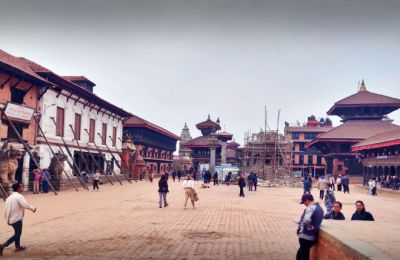
Kathmandu, Pokhara and Chitwan Tour - 9 days
Kathmandu, Pokhara and Chitwan Tour lets you experience the best of Nepalese culture, adventure, snow-capped mountain views and natural wonders of Pokhara and wildlife in chitwan national park
Inquire Now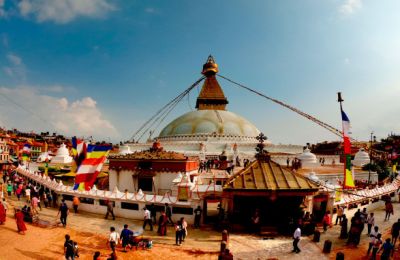
Explore Six UNESCO heritage sites and Nagarkot Sunrise - 3 days
Explore 6 of the UNESCO world heritage sites in Kathmandu Valley and embrace the sunrise over mountains, including the mighty Everest, from the Nagarkot viewpoint.
Inquire NowWhere to travel next?
Get help from our travel specialists for holiday ideas that matches your interests.
Pathibhara Devi Temple
The temple dedicated to Goddess Pathivara is situated in the eastern part of Nepal in the district of Taplejung. The hilltop temple of the Goddess residing at the height of 3,794m/12,448ft is believed to fulfill the wishes of the devotees. Although Phatibhara Devi is known to be a fierce goddess, she is easily pleased with acts of compassion, sacrificial offering, and prayers.
The Hindu devotees from different parts of Nepal and India pay a visit to this temple with the faith that the goddess will grant their wishes. The deity is highly significant for the Hindus as well as the Buddhists. Moreover, it is one of the sacred places for the Limbu ethnic group of Nepal, which refers to the goddess as Mukumlung. The hill of Pathibhara offers a panoramic view of high mountains, including Everest, Kanchenjunga, Makalu, and Lhotse.
Legends
A local shepherd lost hundreds of sheep grazing in the sample place where the temple is located at present. The troubled shepherd dreamt about the goddess who asked to make a temple in her honor and also carry out the ritualistic sheep sacrifice. After doing so, the lost herd of sheep returned. It is believed that the tradition of sacrifices in the temple started thereafter.
Moreover, it is one of the Shakti Peeths formed when a body part of the Goddess Sati fell when Lord Shiva traveled carrying her dead body.
How to Reach Pathivara Devi Temple?
A road journey followed by a trek to Pathivara Devi Temple will take a bit more than a week. Take a scenic drive in the meandering hilly roads from Kathmandu to Illam (Britamode) to Taplejung. After a short drive to Kaflepati, trek to the revered Pathivara Temple. Please pay a visit to the temple and immerse in its spiritual vibe before trekking back to Suketar. Take the same route back to Kathmandu.
When traveling by air, you will be taking a domestic flight approximately 45 minutes from Kathmandu to Bhadrapur, followed by a drive to Taplejung. Further, drive to Kaflepati, followed by a short trek to Pathibhara temple and trek down to Suketar. On the following day, you will be driving to Bhadrapur via Birtamode and taking a flight back to Kathmandu.
Swargadwari Temple
Swargadwari Temple in the Pyuthan district of western Nepal is one of Nepal's famous Hindu pilgrimage sites. It means the door of heaven in Hinduism and popularly believed that paying a visit to this religious site will open the door of heaven after death. Many pilgrims from India and Nepal visit this place every year. The hilltop temple situated at an elevation of 2,100m/6890ft is around 360 km to 224mi. The temple is situated in a scenic place and overlooks the stunning panoramic views of the Himalayas, verdant hills, and farmlands. Moreover, visit the Aakhanda Yagya Shala Mandir and where you will see the holy fire burning for ages now. Next, visit the Gufa Mandir, where different prayers are offered.
Legend
As per legend, Swargadwari is a sacred place where the king of heaven, Indra, performed a Vedic Yagya in Satya Yug. According to the local folklore, Guru Maharaj Narayan Khatri is popularly known as Swami Hamasananda, spend his life near this area milking and herding thousands of cows and also performed Yagyas. He asked his landlord to donate his land, and when he dug the land, he found riced mixed with curd and fire. Later, Swami Hamasananda explained that Pandavas buried those in the Dvapara Yug and the Pandavas worshiped this site before leaving for heaven. The holy fire kept on burning from that period, and the ash from the holy fire is said to cure illnesses, including headaches and stomach aches.
Festivals
A grand mela and cultural programs are organized on the occasion of Baishakh Purnima and Laxmi Puja of Tihar or Dipawali here.
How to Reach Swargadwari?
The way to Swargadwari is motorable, and you will be driving past Kathmandu, Butwal, Bhalubang, Bhingri on your way to Swargadwari. The other route option is a drive past Kathmandu, Butwal, Ghorahi of Dang, Dharmapani to Swargadwari.
Supa Deurali Temple
Supa Deurali Temple is a sacred Hindu temple that is known as a wish-fulfilling goddess. It is said that the goddess grant wishes to those who pray with a clean and pure heart. The pagoda-style temple of the goddess is situated at an elevation of 1,372m/4,500ft in a huge gorge.
How to Reach Supa Deurali Temple?
Supa Deurali Temple lies in the Arghakhachi district of Lumbini province, which is around 400 km away from Kathmandu. You will be driving from Kathmandu to Arghakhachii via Lumbini. It takes roughly around 13 to 14 hours. Shorten the travel time by taking a flight. Take a domestic flight to the Gautam Buddha Airport of Bhairahawa, followed by a drive of around 6 to 7 hours to the temple.
Haleshi Mahadev
Haleshi Mahadev temple of Lord Shiva is located in the Khotang district of eastern Nepal between the Dhudhkoshi and Sunkoshi rivers. The temple is around 222km/138mi from Kathmandu. The cave is approximately 20.4m/67ft beneath the surface. It is round in shape and has a diameter of 28.3m/193ft. Its entrance faces east and is in the shape of a half-moon. Moreover, the Kirat Rai community worships Halesi as their ancestral deity.
There are many caves in the vicinity of Haleshi Mahadev, and the caves are known as the abode of Mahadev while hiding away from Bhasmasur. The first cave, Haleswar Mahadev, features the image of Shiva and is a part of the main temple. The second cave, Basaha, contains the image of Nandi-Shiva’s mount, and the third cave, Bhairava, houses an image of Bhairav.
Legends
The natural cave served as a hiding place of Lord Shiva from Bhasmasur, who was chasing him for 6,000 years.
It holds religious significance not only for Hindus but for Buddhists as well. Guru Padmasambhava is said to have hidden the secret of the longevity teaching of Amitabha Buddha here.
Festivals
Fairs are held here at the festivals like Ram Nawam, Ganesh Chaturthi, and Bhasmasure.
How to Reach Haleshi Mahadev?
Haleshi Mahadev temple lies around 222km/138mi. away from Kathmandu. Take a picturesque drive in a private jeep on the windy, hilly road to the temple. You will be driving from Kathmandu to the holy temple in Khotang via Dhulikhel and Diktel road. Pay a visit to the temple in the morning and returned to Kathmandu.
If you wish to travel in comfort, then you can take a chartered helicopter ride to Haleshi Mahadev from Kathmandu. It is around 2 hours flight; the helicopter will land in a helipad near the temple, pay a visit to the temple and return to Kathmandu.
Triveni Dham
Triveni Dham is a popular Hindu pilgrimage site situated in the confluence of three rivers, Narayani, Sona, and Tamasa. There are many historical temples in the religious sites. Pilgrims from Nepal and India come here to perform pujas and take a holy bath on different occasions all around the year. Moreover, it is considered a holy place where cremated bodies are believed to achieved salvation. Also, important death-related rituals like shraddha and priti darpan are done here.
In the vicinity of Triveni Dham is the Valmiki Ashram which is associated with Ramayana. It is also the place mentioned in the Ramayana where Sita stayed during her exile along with her two sons Lava and Kusa.
Legends
According to legends, Gods, Goddess, and Apsaras from heaven used to come down to earth to take a bath at this sacred river. This place is also linked with the liberation of Gajendra of Bhagavata Purana. It is known to be the holy place from where Gajendra, the elephant, attained Moksha or freedom from the cycle of life and death.
How to Reach Triveni Dham?
Triveni Dham lies in the Nawalparasi district, which is around 243km/151mi. away from Kathmandu. When traveling by land, you will be taking a drive around 6 to 7 hours drive from Kathmandu to Triveni Dham via Chitwan. When traveling by air, you can fly to Bharatpur Airport of Chitwan, followed by around 2 hours drive to the religious site.
Conclusion
These are the revered Hindu pilgrimage sites in Nepal that hold religious significances. The Hindu devotees from all around the world flock to these temples. A good travel partner makes a big difference so choose an experienced travel partner like ‘Third Rock Adventures’! Leave the hassle of planning and preparation to us while you immerse in the spiritual vibe of the Hindu religious site of your choice!
- Written by: Naba Raj Amgai
Updated: Aug, 2, 2021

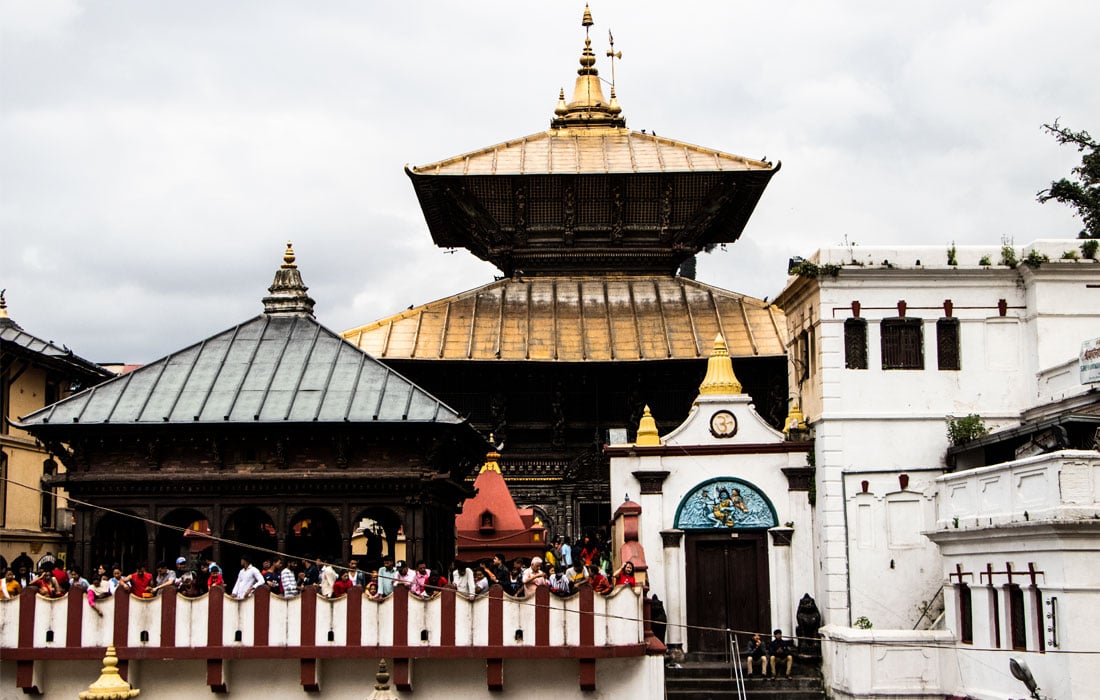













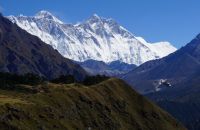
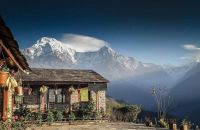
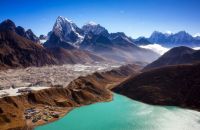
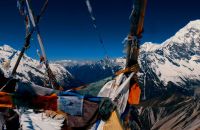
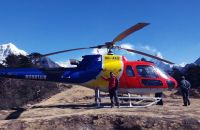
















Recent Comments